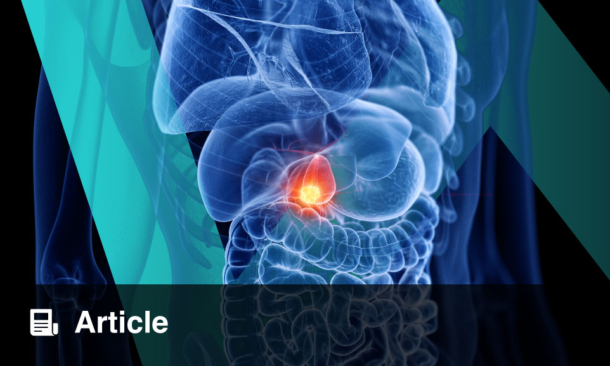THIS YEAR, the United European Gastroenterology (UEG) Week opened in the historical city of Berlin, Germany, welcoming close to 12,000 delegates on site and online for a week of cutting-edge science, rich education, and purposeful debate. Berlin’s blend of history and innovation proved a fitting backdrop for a meeting defined by momentum, innovation, interdisciplinarity, and a clear-eyed focus on the future of digestive health.
The opening ceremony set an energetic tone, featuring two key themes chosen by the Scientific Committee to showcase where gastroenterology is advancing the fastest: 1) getting clinical research right through precision in design, execution, and interpretation; and 2) ‘digestive disease mechanisms’, a “mini-keynote style” programme hosted in the New York room intended to bring basic scientists and clinicians together to accelerate discussions and genuine bench-to-bedside translation. Delegates were encouraged to embrace this opportunity for collaboration and learn each other’s languages, challenge assumptions, and chase the paradigm shifts already brewing. A notable point of pride came from the record number of abstract submissions, with over 4,000 abstracts, and the expansion of moderated poster sessions. The congress also saw a notable increase in attendees from Asia and the USA.
As the medical world increasingly diverts more focus to the accurate dissemination of medical information online, one of the standout plenary moments came from a keynote speech on fake news on social media delivered by Wendi LeBrett, UCLA Health, Los Angeles, California, USA. With over half of adults now turning to social media platforms such as TikTok (Los Angeles, California, USA) and Instagram (Meta Platforms, Menlo Park, California, USA) for health advice, delegates were urged to meet the public where they are, pairing scientific rigour with engaging formats, and embedding ethical, transparent communication into everyday practice.
Beyond the science, UEG showcased its community pillars. Attendees were invited to explore the ‘Young GI’ and ‘Women in GI’ programmes, connect in the UEG Community Hub, and engage with year-round education through Gutflix and the newly popular Gut Guide, which proved to be the must-grab resource of the week.
As always, UEG Week balanced serious discussions with shared celebration, inviting delegates to continue conversations at the glamorous UEG Night and, more importantly, carry collaborations home.
EMJ was delighted to be a part of this year’s meeting and looks forward to returning for the next UEG Week taking place in Barcelona, Spain, in 2026.
Westernised Diets Fuel Colon Cancer Through Sulfate-Reducing Gut Bacteria
RESEARCH presented at UEG Week 2025 revealed how Westernised diets, which are rich in fat and sugar but low in fibre, can accelerate colon cancer development by reshaping the gut microbiome, specifically by promoting the growth of hydrogen sulfide (H₂S)-producing Desulfovibrio bacteria.1
Keidel and colleagues investigated the connection between diet, gut microbes, and tumour formation in murine models of activating transcription factor 6 (ATF6)-driven colon cancer. ATF6, a key regulator of the endoplasmic reticulum stress response, has previously been linked to colorectal cancer onset in humans. In mouse models engineered to express activated ATF6 in intestinal epithelial cells, the researchers explored how dietary composition influences tumour development.
Over a 7-week period, mice were fed either a control chow diet or a Westernised high-lard (HL) diet enriched in fat and sugar, and depleted in fermentable fibre. The HL diet not only increased tumour burden in genetically susceptible mice, but also induced de novo tumourigenesis in animals that would otherwise remain tumour-free.
Attempts to counteract these effects by adding fibre or reducing fat content failed to protect against the HL-induced tumourigenic phenotype. Deep metagenomic sequencing and metabolomic analyses revealed that the HL diet markedly altered the gut microbial landscape, leading to a selective expansion of the Desulfovibrio species, a family of sulfate-reducing bacteria known for producing H₂S, a compound that can damage DNA and intestinal tissues.
To confirm the causal role of the microbiota, the researchers transferred gut bacteria from HL-fed mice into germ-free counterparts, which was sufficient to trigger tumour formation even in the absence of direct dietary exposure. Supplementing the Westernised diet with bismuth subsalicylate, an H₂S scavenger, dramatically reshaped the microbiota and prevented tumour development in previously susceptible mice.
The findings provide direct mechanistic evidence that diet-induced shifts in the microbiome, particularly the enrichment of H₂S-producing bacteria, can drive colon cancer progression. The study underscores the critical role of diet–microbiome interactions in colorectal carcinogenesis and points towards microbial H₂S as a potential therapeutic target in diet-associated colon cancer.
Stopping Anti-TNF Therapy in Early Crohn’s Disease May Risk Relapse
RESULTS from a prospective multicentre study by the Groupe d’Étude Thérapeutique des Affections Inflammatoires du Tube Digestif (GETAID) network suggest that discontinuing anti-TNF therapy, even in patients with early Crohn’s disease (CD) who achieve deep remission, may lead to loss of disease control. The findings, presented at UEG Week 2025, reinforce the importance of sustained biologic therapy to maintainlong-term remission and prevent disease progression.2
CD is a chronic inflammatory condition that can cause cumulative intestinal damage if not tightly controlled. Early intervention with biologic agents such as adalimumab has been shown to improve outcomes, but the optimal treatment duration once remission is achieved remains uncertain.
This prospective cohort study evaluated whether adalimumab could be safely discontinued after 12 months in adults with early, biologic-naïve CD who achieved both clinical and biomarker remission at 6 months, and deep remission at 1 year. Among 171 patients treated across multiple centres, 22.2% (38 patients) achieved deep remission at 12 months. Of those who stopped treatment, only 22.6% (7/31) maintained deep remission 1 year after withdrawal, corresponding to just 4% of the total cohort remaining in deep remission 2 years after starting adalimumab.
The median time to relapse after stopping therapy was 14 months, and no reliable predictive factors for sustained remission were identified. Importantly, no serious adverse events were reported during the study period.
These results, representing the first prospective trial to assess biologic withdrawal in early CD, suggest that discontinuing anti-TNF therapy, even after prolonged remission, carries a substantial risk of disease relapse. The findings highlight the continued need for ongoing maintenance therapy and careful long-term monitoring to preserve deep remission and prevent irreversible disease progression.
Reassuring Early Data on JAK Inhibitor Use in Pregnancy
RESEARCH presented at UEG Week 2025 revealed how Westernised diets, which are rich in fat and sugar but low in fibre, can accelerate colon cancer development by reshaping the gut microbiome, specifically by promoting the growth of hydrogen sulfide (H₂S)-producing Desulfovibrio bacteria.1
Keidel and colleagues investigated the connection between diet, gut microbes, and tumour formation in murine models of activating transcription factor 6 (ATF6)-driven colon cancer. ATF6, a key regulator of the endoplasmic reticulum stress response, has previously been linked to colorectal cancer onset in humans. In mouse models engineered to express activated ATF6 in intestinal epithelial cells, the researchers explored how dietary composition influences tumour development.
Over a 7-week period, mice were fed either a control chow diet or a Westernised high-lard (HL) diet enriched in fat and sugar, and depleted in fermentable fibre. The HL diet not only increased tumour burden in genetically susceptible mice, but also induced de novo tumourigenesis in animals that would otherwise remain tumour-free.
Attempts to counteract these effects by adding fibre or reducing fat content failed to protect against the HL-induced tumourigenic phenotype. Deep metagenomic sequencing and metabolomic analyses revealed that the HL diet markedly altered the gut microbial landscape, leading to a selective expansion of the Desulfovibrio species, a family of sulfate-reducing bacteria known for producing H₂S, a compound that can damage DNA and intestinal tissues.
To confirm the causal role of the microbiota, the researchers transferred gut bacteria from HL-fed mice into germ-free counterparts, which was sufficient to trigger tumour formation even in the absence of direct dietary exposure. Supplementing the Westernised diet with bismuth subsalicylate, an H₂S scavenger, dramatically reshaped the microbiota and prevented tumour development in previously susceptible mice.
The findings provide direct mechanistic evidence that diet-induced shifts in the microbiome, particularly the enrichment of H₂S-producing bacteria, can drive colon cancer progression. The study underscores the critical role of diet–microbiome interactions in colorectal carcinogenesis and points towards microbial H₂S as a potential therapeutic target in diet-associated colon cancer.
Study Supports Guselkumab as Next Step for Biologic-Resistant Crohn’s Disease
GUSELKUMAB, a selective IL-23p19 inhibitor, is under investigation as a treatment option for patients with moderately-to-severely active Crohn’s disease (CD). New information presented at UEG Week 2025 from the GALAXI 1 (Phase IIb) and GALAXI 2/3 (Phase III) long-term extension studies showed that patients who received ustekinumab and showed inadequate treatment response were eligible to switch to guselkumab without intravenous induction. The key finding from this analysis is that more than half of these patients achieved clinical remission within 16 weeks following the treatment switch.4
Participants in the long-term extension were initially treated with ustekinumab 90 mg subcutaneously every 8 weeks. Those who failed to achieve a clinical response (defined as a Crohn’s Disease Activity Index [CDAI] reduction of ≥100 points from baseline or CDAI <150) or who had a CDAI of ≥220 between Weeks 52 and 80 were eligible to switch to guselkumab 200 mg subcutaneously every 4 weeks. Clinical efficacy was assessed 16 weeks post-switch, while endoscopic outcomes and safety were evaluated at Week 96.
Of 80 patients who switched to guselkumab, 75 were included in the efficacy analysis. The mean age was 35.2 years, 64.0% were male, and 60.0% had prior inadequate response or intolerance to biologics. Sixteen weeks after switching to guselkumab, 61.3% of patients achieved clinical response and 52.0% achieved clinical remission. Endoscopic response and remission at Week 96 (around 1 year after the treatment switch) were seen in 49.3% and 30.7% of patients, respectively. These outcomes were similar to those observed in patients treated with guselkumab from the start of the trial. The safety profile was favourable, with 62.5% experiencing at least one adverse event, 7.5% reporting serious adverse events, and no serious infections reported during the follow-up period.
These findings suggest that guselkumab may be a viable therapeutic option for patients with CD who fail to respond adequately to ustekinumab, even without an initial intravenous induction phase. However, the study’s limitations include its non-randomised design, limited sample size, and the absence of a comparator arm, which may affect generalisability. In clinical practice, these results offer potential reassurance when considering therapeutic sequencing in biologic-experienced patients with CD.
Endoscopic Stenting as First-Line Therapy for Complex Benign Upper Gastrointestinal Disorders
A STUDY presented at UEG Week 2025 reports that endoscopic placement of double-bump antimigratory Niti-S™ Beta-2™ EKxxxxFNT2 (TaeWoong Medical Industries, Gimpo-si, South Korea) oesophageal covered stents is an effective surgery-sparing treatment for complex benign upper gastrointestinal conditions.5
Endoscopic stenting has emerged as a viable alternative to surgery for benign upper gastrointestinal pathological conditions, particularly in patients with refractory strictures or post-surgical transmural defects. Niti-S™ Beta-2™ EKxxxxFNT2 oesophageal covered stents were developed to address these conditions, with design features aimed at minimising stent migration and tissue embedment. This study aimed to assess the safety and efficacy of these stents in a cohort of patients with complex benign gastrointestinal disorders.
A monocentric retrospective analysis was conducted on prospectively collected data of patients undergoing EKxxxxFNT2 placement for benign indications between January 2019–December 2024. Demographic, anthropometric, clinical, and technical variables were evaluated alongside safety and efficacy outcomes. A total of 32 patients were included: 17 patients were male (53.1%), the median age was 63 years, and 25 patients (78.1%) had post-surgical conditions. Indications for stent placement comprised leakage in 16 cases (50%), stricture or compression in eight (25%), and fistula in eight (25%). The most frequently applied stent was the 24×200 mm EKxxxxFNT2 (16/32; 50%). Technical success was achieved in all procedures, with no periprocedural adverse events recorded. Stent migration occurred in four cases (12.5%). Median time to oral refeeding was 4 days (interquartile range: 2.0–10.0), and median stent dwell time was 34 days (interquartile range: 17.3–41.5). Three patients (9.4%) died before stent removal. Overall clinical success was achieved in 26 patients (81.3%), while anastomotic leakage was significantly more common among the unsuccessful cases (5/6, 83.3% versus 7/26, 26.9%; p=0.0012). Two cases (8%) of stenosis relapse were successfully managed endoscopically.
In conclusion, Niti-S™ Beta-2™ EKxxxxFNT2 oesophageal covered stents are effective interventions for complex benign upper gastrointestinal disorders, demonstrating high technical and clinical success rates. These findings support their use in clinical practice as a surgery-sparing strategy, particularly for post-surgical defects and refractory strictures. Future considerations include continued optimisation of stent dwell time and close monitoring of leakage cases to further improve outcomes.
Prior Clarithromycin Use Linked to Lower Helicobacter pylori Treatment Success
A LARGE European registry study, presented at UEG Week 2025, has found that previous macrolide consumption, especially clarithromycin, reduces the success rates of first-line Helicobacter pylori eradication therapies, underscoring the need to tailor antibiotic regimens based on local resistance trends.6
This study, conducted across 23 countries using data from the European Registry on H. pylori Management (Hp-EuReg), aimed to quantify how prior community macrolide use affects eradication success in treatment-naïve patients. Researchers performed a retrospective, multicentre, ecological analysis including 27,549 treatment-naïve patients with linked macrolide consumption data spanning 2013–2022. Macrolide use, expressed as defined daily doses per 1,000 inhabitants per day, was obtained from the European Surveillance of Antimicrobial Consumption Network (ESAC-Net). The team identified the key variables to be first-line clarithromycin-based treatments, therapy duration (7, 10, 14 days), proton pump inhibitor dose (low, standard, high), compliance (>90%), and clarithromycin consumption. Using multivariate logistic regression and hierarchical models, investigators evaluated the relationship between national macrolide use and treatment outcomes.
Higher population-level macrolide use within the preceding 8 years was associated with lower H. pylori eradication rates, with the strongest effect observed for exposure within 4 years before treatment. The success of clarithromycin-containing regimens, including triple therapies with amoxicillin or metronidazole, and some bismuth-quadruple combinations, declined progressively as macrolide consumption increased. Eradication effectiveness fell from 93% to 82% when clarithromycin use occurred 2 years prior to treatment. The negative impact waned after approximately 5 years, suggesting partial recovery of antibiotic susceptibility over time.
These findings confirm that prior clarithromycin exposure in the community undermines the efficacy of first-line clarithromycin-based H. pylori therapies, although these effects decreased after 5 years.
New Highly Selective Salt-Inducible Kinase 3 Inhibitor Shows Promise for Inflammatory Bowel Disease
A NOVEL therapeutic candidate, O3R-5671, has shown strong potential to improve outcomes for patients with inflammatory bowel disease (IBD) by targeting multiple inflammatory pathways while minimising safety concerns seen with earlier drug classes. The findings were presented at UEG Week 2025, marking an important advance in the development of next-generation oral therapies for autoimmune diseases.7
Current IBD treatments are constrained by modest remission rates and loss of response over time. While biologic combinations can enhance efficacy, they often require complex dosing schedules. JAK inhibitors act on multiple cytokine pathways but are limited by safety issues. Researchers have, therefore, turned to salt-inducible kinases (SIK), key regulators of immune signalling, as a promising new target.
Through structure-based drug design, researchers developed O3R-5671, a highly potent and selective SIK3 inhibitor with minimal off-target activity against SIK1, SIK2, or other human kinases. In laboratory assays, O3R-5671 inhibited pro-inflammatory cytokines TNFα, IL-12, and IL-23, while promoting the release of the anti-inflammatory cytokine IL-10.
In animal studies, O3R-5671 demonstrated dose-dependent efficacy in two independent models of IBD, as well as models of psoriasis and psoriatic arthritis. Pharmacokinetic profiling suggested a flat and predictable exposure profile suitable for sustained SIK3 inhibition in humans. Importantly, 6-week good laboratory practice toxicology studies in rats and dogs established no observed adverse effect levels, which supports safe human dosing with a large safety margin.
The compound’s selectivity for SIK3, sparing of SIK1 and SIK2, and broad cytokine inhibition profile suggest that O3R-5671 could offer ‘best-in-class’ potential for treating IBD and related autoimmune diseases. A first-in-human clinical trial is now underway to assess its safety, pharmacokinetics, and effects on immune biomarkers.
Gut Mycobiome Biomarkers Predict Immunochemotherapy Response in Oesophageal Cancer
NEW research presented at UEG Week 2025 has demonstrated that gut fungal profiles can accurately predict patient responses to neoadjuvant immunochemotherapy in oesophageal squamous cell carcinoma (ESCC).8
ESCC continues to present poor survival outcomes despite advances in multimodal care. Variability in responses to neoadjuvant immunochemotherapy highlights the urgent need for reliable predictive biomarkers. While the influence of bacteria on immunotherapy has been widely examined, the potential contribution of the gut mycobiome remains unclear.
This study analysed 136 faecal samples from 68 patients with ESCC, including pre- and post-neoadjuvant immunochemotherapy specimens, alongside 19 samples from healthy controls. Tumour regression grade (TRG) scores classified patients as responders (n=26) or non-responders (n=42). Internal transcribed spacer 2 sequencing was used to assess fungal diversity, composition, and co-occurrence networks. The Boruta algorithm selected fungal biomarkers for machine learning model development using a multilayer perceptron framework with five-fold cross-validation. Mouse xenograft models were further employed to explore functional mycobiome–immune relationships through faecal microbiota transplantation and targeted fungal manipulation.
The results revealed that patients with ESCC exhibited pronounced mycobiome dysbiosis, with reduced fungal diversity and distinct compositional patterns versus controls. Responders displayed higher baseline diversity and enrichment of Meyerozyma, Candida boidinii, and Trichosporon dermatis, while non-responders showed dominance of pathogenic Candida and Saccharomyces species. Network analyses indicated greater co-occurrence stability in responders. The final machine learning model achieved area under the curve values of 90.2% (training) and 91.9% (test). In vivo, mice receiving responder-derived faecal microbiota transplantation had reduced tumour growth and increased cluster of differentiation (CD)8+ T cell infiltration. Candida boidinii supplementation enhanced anti-programmed death (PD)-1 effects, while Saccharomyces depletion sensitised tumours to treatment.
These findings highlight the gut mycobiome as a potent biomarker of immunochemotherapy response and a modifiable therapeutic target in ESCC. Integrating fungal profiling into clinical decision-making could improve response prediction, enable personalised treatment planning, and support microbiome-based adjuvant strategies to boost immunotherapy outcomes in future practice.
AI Scoring Uncovers the Benefits of Personalised Infliximab Dosing in Acute Severe Ulcerative Colitis
AT UEG WEEK 2025, Krisztina Barbara Gecse, Amsterdam University Medical Center, the Netherlands, presented compelling findings from a post-hoc analysis of the TITRATE study, revealing that therapeutic drug monitoring-based personalised infliximab (IFX) dosing achieves better outcomes than standard treatment in patients with acute severe ulcerative colitis, a result made evident through the use of AI-assisted endoscopy scoring.9
In this prospective, multicentre trial, adults with steroid-refractory acute severe ulcerative colitis were randomised 1:1 to standard dosing (SD) or personalised dosing (PD) guided by predefined serum IFX levels using a Bayesian pharmacokinetic algorithm (iDose®, Baysient, Fort Myers, Florida, USA). The dosing targets were >28 μg/mL during the first 4 weeks and >15 μg/mL between Days 29–42. The primary endpoint combined clinical and endoscopic response at Day 42, initially evaluated by expert readers and later by the AI-based DovaVision™ (Dova Health Intelligence, Vancouver, Canada) ulcerative colitis tool.
Among 48 patients enrolled (23 PD and 25 SD), baseline characteristics were comparable. By Day 42, patients in the PD arm had received a higher cumulative IFX dose (median 18.4 mg/kg versus 13.8 mg/kg in SD). While human readers reported no statistically significant difference in response (57% PD versus 44% SD), AI analysis detected a marked advantage for personalised dosing (74% PD versus 32% SD; p=0.0047). PD also showed superior clinical response at Day 42 (91% versus 64%; p=0.039) and higher remission rates at Day 182. Endoscopic remission at Day 182 was significantly greater with PD when scored by AI (52% PD versus 20% SD; p=0.0337).
Serious adverse events occurred in 9% of PD patients compared with 20% of SD patients, without new safety concerns.
This analysis represents the first inflammatory bowel disease study where an AI system identified a significant treatment benefit missed by expert reviewers. The findings underscore the promise of AI-assisted endoscopic evaluation in clinical research and the clinical superiority of therapeutic drug monitoring-guided, personalised IFX dosing in acute severe ulcerative colitis.
Real-World Patients Often Ineligible for Inflammatory Bowel Disease Clinical Trials
A COLLABORATIVE Italian-American study presented by Federica Di Vincenzo, Fondazione Policlinico Universitario “A. Gemelli” IRCCS, Rome, Italy, at UEG Week 2025 revealed a significant gap between clinical trial eligibility and real-world practice in inflammatory bowel disease (IBD) treatment.10
The findings highlight how current RCT criteria may exclude the majority of patients seen in daily care, raising concerns about the generalisability of trial results.
Modern treatment strategies in IBD aim for mucosal healing, prevention of complications, and improved quality of life, as defined by the Selecting Therapeutic Targets in Real-world IBD: Diagnosis and Evaluation (STRIDE) II initiative. However, while advanced therapies have transformed disease management, up to half of patients with IBD fail to respond to available options, creating a pressing need for new drugs. The challenge, Di Vincenzo’s team noted, is that many of these therapies are evaluated in trials with stringent inclusion criteria that do not reflect the diversity of real-world patients.
The prospective, observational study analysed 166 patients with IBD (69 with ulcerative colitis [UC] and 97 with Crohn’s disease [CD]) eligible for new advanced therapies across two tertiary referral centres: the Gemelli Hospital in Rome, Italy, and the University of Miami’s Crohn’s & Colitis Center, Florida, USA. Each patient was systematically screened against the inclusion and exclusion criteria of actively recruiting Phase IIb and III clinical trials.
The results showed that only 23% of patients with UC and 10% of patients with CD met the eligibility criteria for at least one RCT. The most frequent reasons for exclusion in UC included Modified Mayo scores outside the required range, absence of bowel urgency, and recent corticosteroid or 5-aminosalicylic acid use. In CD, the main limiting factors were Crohn’s Disease Activity Index (CDAI) scores outside the range of 220–450, low stool frequency, and the presence of complications such as strictures or fistulas.
According to Di Vincenzo, these findings reveal that many patients initiating biologic or small molecule therapy in clinical practice do so for radiologic or post-operative disease activity, rather than for meeting specific clinical score thresholds used in trials.
The study concludes that current IBD clinical trial criteria are too restrictive, particularly for CD, and should be revised to better represent real-world populations. Broadening eligibility would enhance the external validity of future trials and ensure that advances in IBD therapy truly reflect the patients treated in clinical practice.







